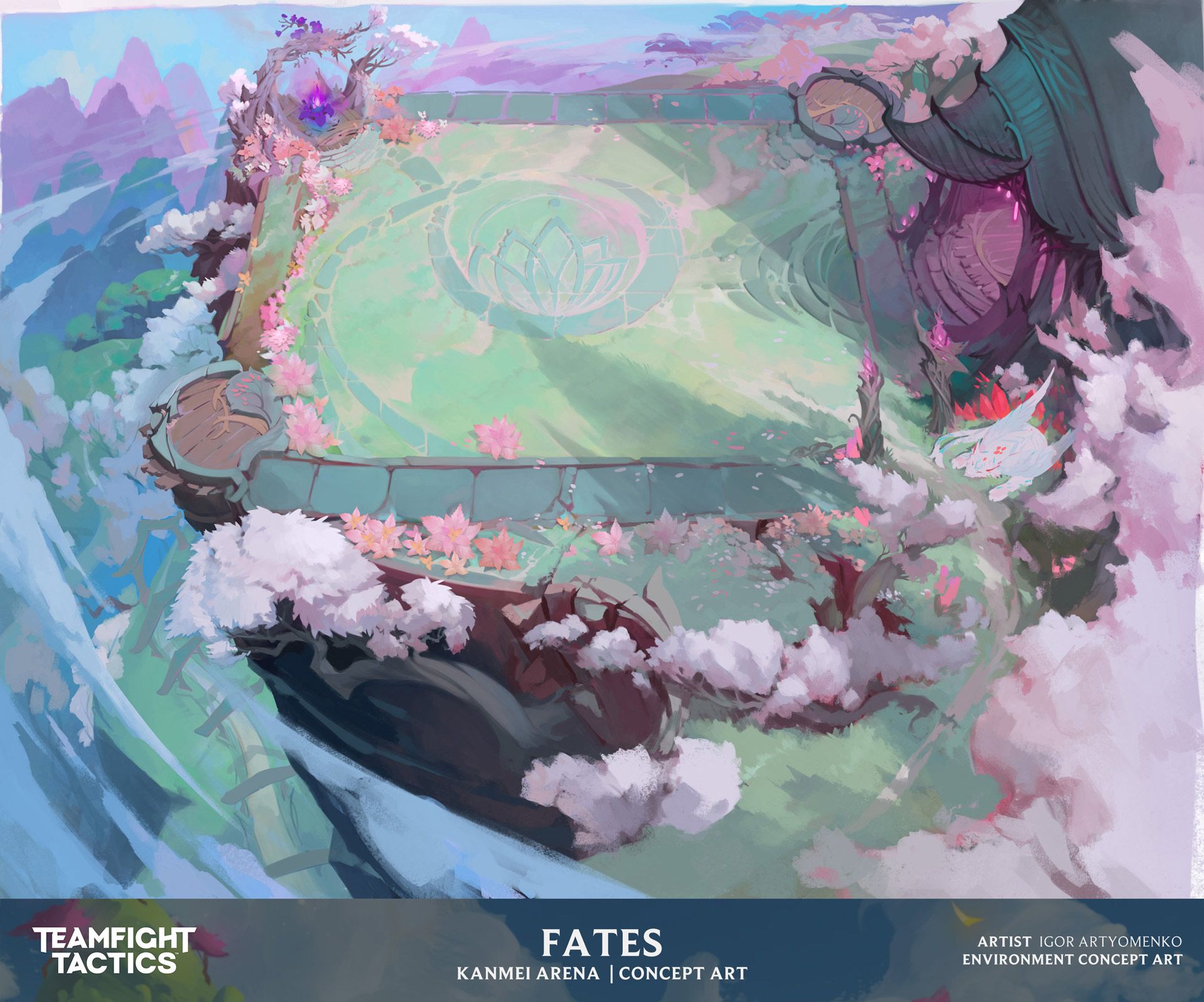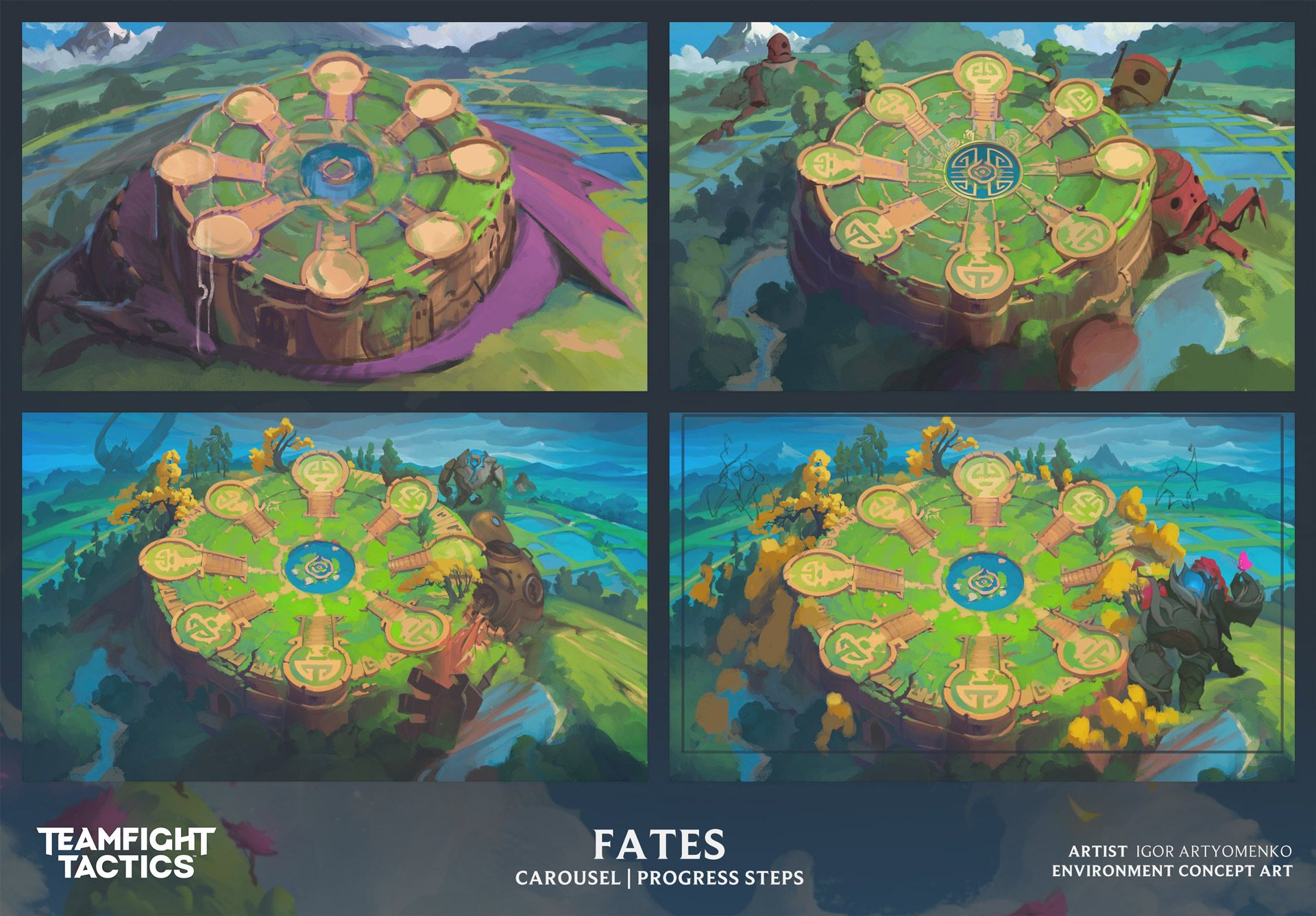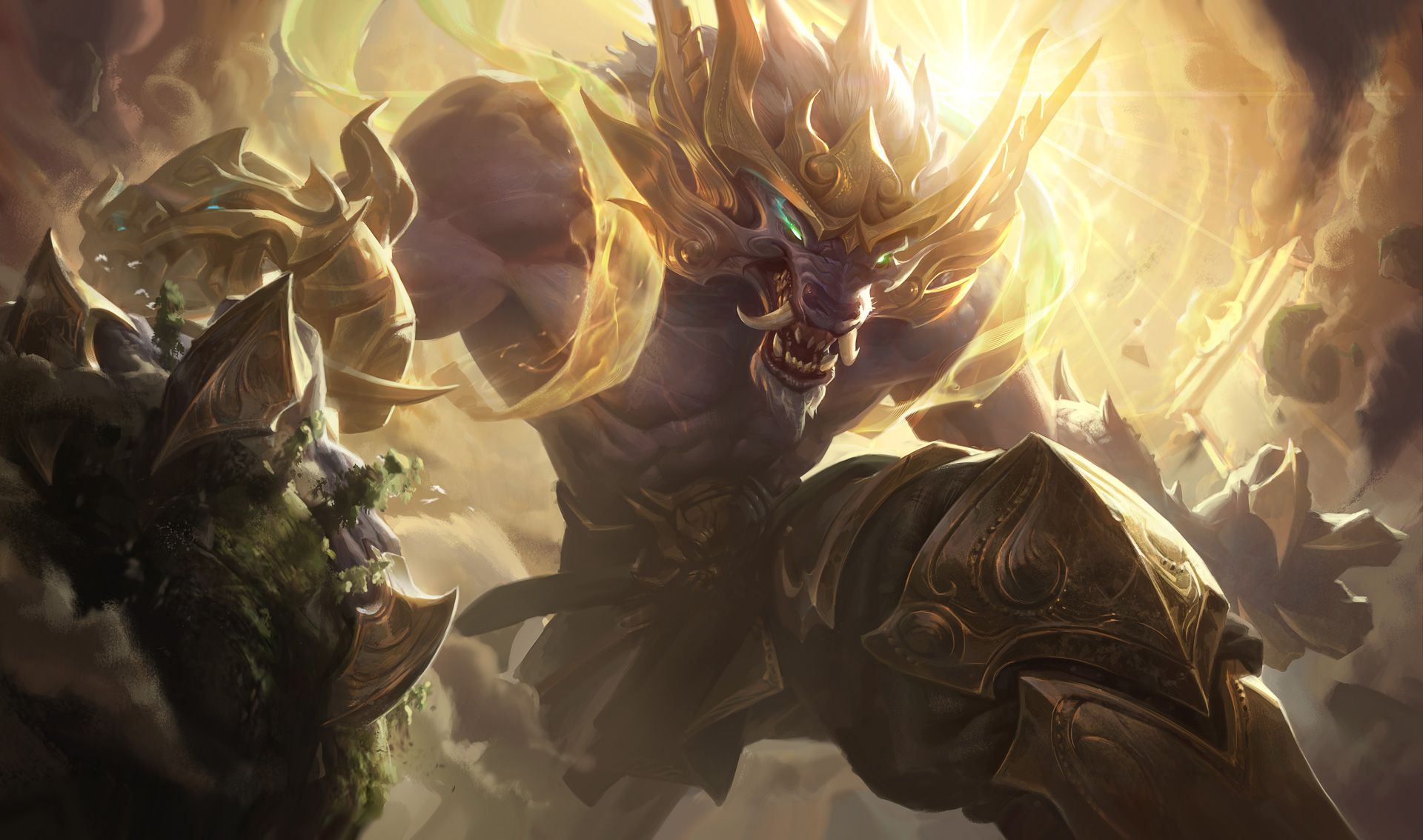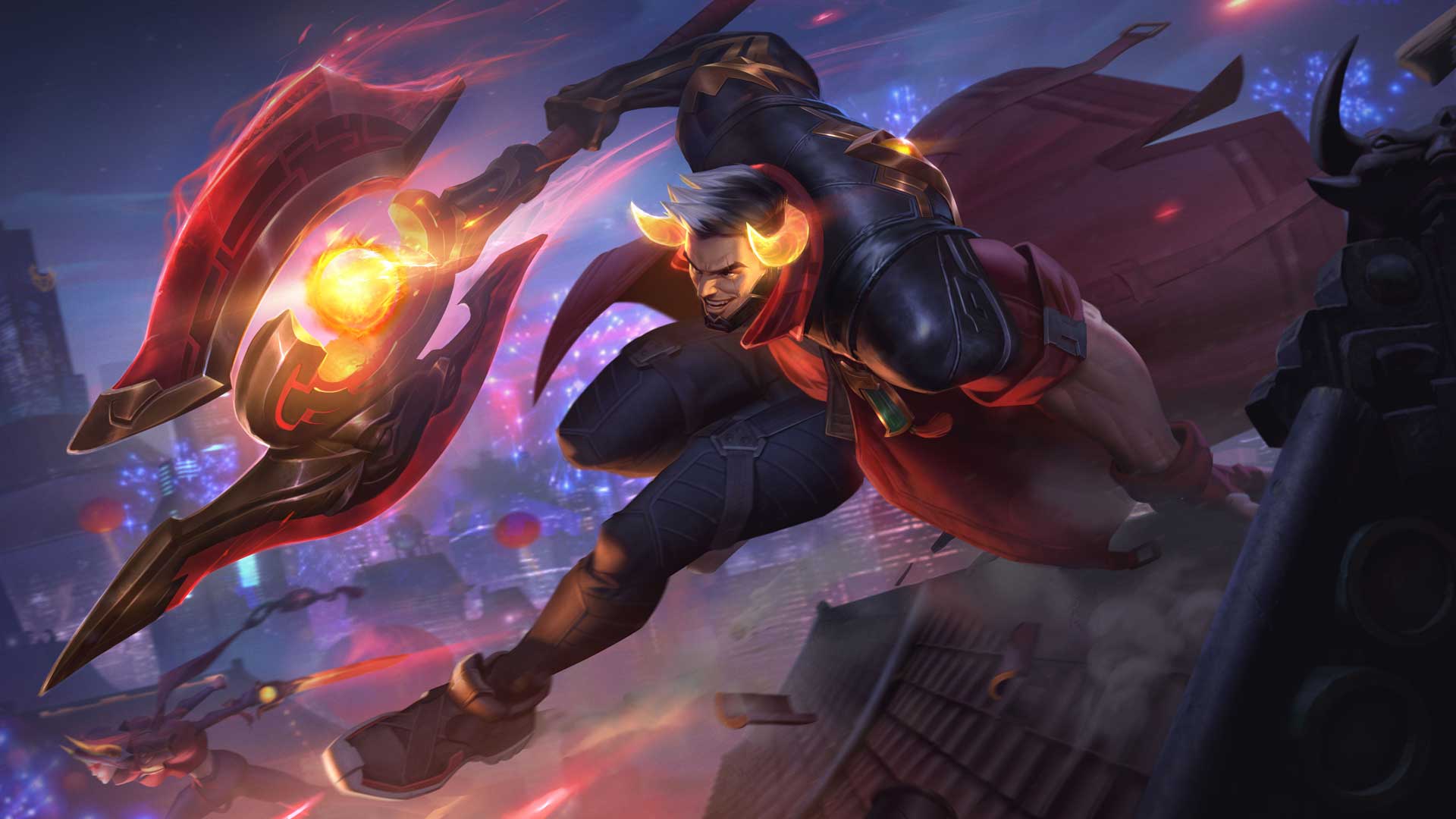/DEV TEAMFIGHT TACTICS: FATES LEARNINGS
As Fates comes to an end, it’s time for what has become a tradition: the Learnings Article. Here, we look back on what we promised for Fates, and talk about the things we need to improve on in the future.
TL;DR
If long-form isn’t your style, here’s a medium-form summary:
Looking Back
- Theme & Fantasy: Galaxies had a great thematic, and with Fates, we took it even farther with a mid-set that felt and played differently than the first half of the set. Expect us to continue developing deep thematics for Reckoning and beyond!
- System Changes & Champion Counts: With a stable roster of 58 champs,rolling felt consistent throughout the set, but the Chosen mechanic required system changes across many patches. These system changes are something we are working to avoid with the design of future mechanics.
- The Galaxies Mechanic: We enjoyed the rotating Galaxies and explored ways of adding them to Fates, but we decided against it. Rotating galaxies combined with the Chosen mechanic felt like it was muddying the core identity of TFT.
- The Carousels: We’ve gotten close to the sweet spot between predictability and adaptability for our Fates carousels. Don’t expect major carousel changes in the future.
- Item Flexibility: We’re working to ensure key items aren’t required on specific champs and that the multiplicative values of certain item combinations doesn’t dramatically outshine other combos, but we still have a long way to go.
- Quality of Life Changes: We’ve added an abundance of quality-of-life improvements to Fates throughout the set (like combat recap panels) and will continue to do so in the future.
- Balance & Patching Strategy: We’ve had some great patches throughout Fates, as we’ve been using a targeted patching strategy that allows for deep focus on particular pieces of the game, which will continue into the future.
Looking Forward
- Set Mechanic & The Chosen Mechanic: The Chosen mechanic was an overall success with several drawbacks that we’ve learned a great deal from. Expect the Reckoning set mechanics to not be as impactful on the core TFT gameplay, and to promote player agency as opposed to being out of the player’s control.
- Mid-Set Expansions: Cycling out core carries, introducing new traits, swapping around existing champs’ traits, and adding a mechanic are all vital mid-set features that we wish to continue with the Reckoning mid-set.
- Power of Champs Relative to Cost: Whether you’re rerolling for one-costs, going fast 9, or anything between, expect us to continue to promote diverse and viable play patterns by balancing champions relative to their cost and star level.
- Fortune: Pirates, Fortune, and Space Pirates, oh my! We want to continue exploring exciting and unique traits like these that encourage big clickbait moments.
Looking Back
First, let’s look back on the things we said we’d improve from the end of Galaxies and how it went.
Theme & Fantasy
Last time, we said we wanted to keep expanding the depth and distinct feel of set themes. With this in mind, the Galaxies was a big improvement over the Rise of the Elements, and from what we can tell, this was also a massive success with Fates and Festival of Beasts.
Fates was a fantastic yet serene journey, and the champs and skins like Spirit, Warlord, Dusk, and more, all helped deliver on this fantasy. The Festival of Beasts then managed to release different maps as well as Origins like Fabled and Dragonsoul that gave it its own unique feel. Because this is going so well, we’re going to continue pushing unique themes and fantasies in Reckoning and beyond.
For our first time, we’re also diving into a completely unique map skin alongside a Little Legend variant that isn’t tied to the Reckoning’s theme, but instead highlights a new locale for you all to soak up the sun in.
System Changes & Champion Counts
We spent the first half of Galaxies trying to get the rolling odds, player damage, and win streaks to a good spot. Once we did, we added more champs to the pool, causing us to have to redo the rolling odds, player damage, and wins steaks again. So we made the commitment that Fates would have 58 champs for the entirety of the set so that the core systems wouldn’t need to change much.
This was both a success and a failure.
Having a stable roster of 58 was a success, as it allowed players to retain how the rolling odds felt throughout the entire set, and meant we didn’t have to make changes to player damage and roll odds much. BUT the Chosen mechanic threw a big wrench in that plan, and we found ourselves making more system changes than we wanted to. In patch 10.20, we had to reduce 4-cost drop rates. In 10.24, we had to adjust the regular and Chosen drop rates as well as player damage. And then in 11.4, we had to remix the Chosen system drop odds for the Festival of Beasts.
These types of massive systemic overhauls are not something we want to have to do mid-set, as they cause frustration from loss of previous knowledge. We’ll still do them when it’s necessary for game health, but our goal is to no longer do larger system adjustments mid set and to design mechanics that lower the risk for the need to do these changes.
The Galaxies Mechanic
At the end of Galaxies, we were excited by the prospect of bringing some of the galaxies that went over well back into TFT as a permanent fixture. We explored the idea and had some great directions we were pretty happy with. But as Fates went on, it became clear that adding more systems would push TFT in a direction that drowned out the core gameplay.
For example, imagining a game with Chosen AND Trade Sector (one free reroll per turn) felt like it pulled focus from team building and positioning choices that make for some of the best moments in TFT. With having Chosen and rotating Galaxies, the focus is instead on adapting to circumstances the game throws at you, which as we learned from Galaxies can be overwhelming. So for now, we’ve decided to put this project on hold and focus on continuing to improve the core sets and the single set mechanic. This doesn’t mean we’ll never revisit a previous mechanic like Galaxies, but it may be a while as we want to focus on new experiences first.
The Carousels
Galaxies was full of crazy carousels, including full items carousels, all Zephyr carousels, and other wacky variations. Despite their fun, the variations were hard to predict and made strategic choices difficult. So for Fates, we removed the crazier full item carousels (except the rare all Force of Nature ones), while also making the outcomes more predictable. We definitely hit our goal here, as it got us back to a world where you could make better choices around the carousel.
We know some players will always prefer full predictability and won’t like the inclusion of Force of Nature starts—or the Stage 3 carousel with three spatulas and six random items—but this addition creates enough unpredictability and risk to help prevent copy-paste strategies from emerging .It also does a good job in creating some rare and unique experiences without being overbearing and feeling like every game was out of your control. So while we may alter a few percentages, don’t expect any major changes to the carousel rules this time around.
Item Flexibility
At the end of Galaxies, we wanted to make sure items didn’t make you feel locked into a particular build, or that you must have certain items to make builds function. While we did make SOME progress here (Blue Buff no longer causing champs to do 300% more damage, and Shojin not allowing 200 mana champs to cast in five autos), we also missed our goal in a lot of ways.
RFC became a staple for a lot of champions like Zed, Akali, and Kayle. Guardian Angel was too often tied to Ahri, Zilean, or Olaf. Hurricane was a must on Warwick, Olaf, and Shyvana. Gunblade was too required for Veigar, Aurelion Sol, and Nunu. There are more examples, but generally the difference between these champs with and without these items was far too great than we are comfortable with.
But let’s be clear on our goals here: It’s okay if champions have “Best in Slot” item builds that outperform other builds. For example, it’s okay that Aurelion Sol wants Jeweled Gauntlet over Deathcap, as long as the difference isn’t massive. There’s always going to be a best build for players who try to maximize every advantage. Our goal is to make sure a champ’s effectiveness isn’t so dramatically reduced that they feel not worth pursuing unless they have that single key item. You can expect us to continue with the goal of increasing item flexibility by trying to make sure key items aren’t required and by ensuring the multiplicative values of certain item combinations don’t dramatically outshine all other options. It’s not going to be easy, but you’ll see changes right away that try to address this.
Quality of Life Changes
At the end of Galaxies we introduced recipe hints for items. With the positive feedback to these changes, we promised to make more quality of life improvements throughout Fates. So we did. We shipped a number of “under the radar” UI/UX improvements over the course of Fates, just for you, and every other TFT player too.
Here are a few of the top changes:
- In 10.20 we added tabs to the Combat Recap panel that displays damage blocked, and shields /healing for your team.
- In 10.22 we added Chosen roll chances in the Shop tooltip.
- In 10.25 we finally made changes to the bench overflow system that previously allowed players to cheat an extra unit onto the board when their bench was full.
- In 11.1 we made it so players could cycle through boards without seeing the empty boards of eliminated players.
- And in 11.4 and 11.5 we tightened up hotkeys and the Shop, to prevent accidental selling or buying when the Shop isn’t available.
All this goes to show that our UX team is dedicated to crafting a TFT experience that allows you to embrace your inner tactician, whether you are playing on PC or on mobile. You can expect us to continue improving game features to provide a more immersive and intuitive experience, especially as we continue to add new mechanics and systems to the game.
Balance & Patching Strategy
Finally, we mentioned that we wanted to change our patch strategy to focus on 1-3 high-level goals each patch and be more surgical about what we address. While we didn’t have perfect balance this set, our strategy in choosing specifically what to address each patch worked well and allowed us to improve the game quicker and more effectively.
Both 10.24 (which changed roll odds) and 11.4 (a nerf to reroll comps to balance different econ strategies) were good at being large patches with clear and focused goals, and we managed to come out the other side with a better, more balanced game each time. This is not to say we nailed the outcome of balance with every patch. For instance, 10.21 had the goal of trying to increase some of our less-used items like Ludens and Statikk Shiv, as well as give Divine a rework to be more useful, but the result ended up creating the chimera beast that was, Warweek.
Despite some hiccups, we still think this patching strategy has been overall effective at getting us to a desired state, so expect us to continue our targeted-patching strategy and focus on improving the average results. I think we’ve shown over time we’re getting better on the whole, so let’s keep that going.
Looking Forward
Now let’s jump into the new learnings we’re carrying into future sets.
Set Mechanic & The Chosen Mechanic
Ok, this could be an entire article on it’s own. The Chosen mechanic will be something we’ll all remember for a long time, and definitely is representative of the Fates set. I’m often asked if we feel the Chosen mechanic was a success, and the short answer is YES. It did a lot of good, and changed Fates in a unique way. But it certainly wasn’t perfect, and it’s time for it to leave as it doesn’t make sense as a permanent part of the game.
Let’s break down what worked and what could be improved. First the good:
- It succeeded in allowing folks to play TFT more like the draft-style game we always intended, as it made you try more comps and more ways to play than most players did in previous sets. Constantly changing Chosens meant constant opportunities to try something different, and our data shows this worked in keeping players interested in the game for longer.
- The Chosen mechanic resonated with players thematically, having a Chosen hero just fit the Fates aesthetic perfectly. The mechanic also excited players for the release of Fates, as it had something very new to TFT. The mechanic was easy to grasp and inspired players to experience all the possibilities of unique comps that were only possible due to the extra trait the Chosen provided.
But also the drawbacks:
- It took us too many iterations to get the tuning and feel of the system correct. Needing both Patch 10.24 and 11.4 to make big iterations isn’t something we’d like to do in the future for a set mechanic. We’ll still do it when absolutely necessary, but for Reckoning we are aiming at having less big system changes in the middle of the set.
- We wanted every champion to be an exciting Chosen, but that proved too much—while every champ is at least viable, some of them just don’t live up to the hype as much as others.
- After your first 100-200 games, the lack of agency behind the chosen system can leave you feeling like the game is out of your hands more so than previous mechanics. This was especially true for our most competitive players who felt like they were too reliant on hitting the correct Chosen.
Upon review, the Chosen mechanic is at the highest end of impact for a set mechanic. It certainly was a MAJOR part of Fates and changed your decision making and playstyle a lot. For now, we’re going to look at set mechanics that still fit our primary goals of adding variety and uniqueness to the game, but with a caveat. Since Elemental Hexes, Galaxies, and Chosen all felt very out of your control, we’re also going to be exploring ways to add some player agency to set mechanics to see the impact that has on the game. TFT: Reckoning has our first stab at this kind of mechanic.
Mid-Set Expansions
Festival of Beasts was our second mid-set expansion, and we set out to make it even more successful than Galaxies: Return to the Stars.
Here are some of the things that worked really well:
- Since comps are often identified by their carries, swapping out the 4-cost carries was necessary to make the mid-set comps feel significantly different. Galaxies had the issue of Jinx comps the whole way through, whereas Fates got to see way more unique comps in the second half.
- Introducing new vertical traits makes the identity of the set really shine. Galaxies only had Battlecast, which was a very difficult to play trait. On the other hand, Fates had a couple of new traits that were flashy (Dragonsoul, Fabled), or just down-right cool (Slayer, Syphoner). Having something new and exciting to latch onto is key.
- Swapping existing champs traits (Diana going from Moonlight to Spirit, or Zed going from Shade to Slayer) gave new life and ways to play existing characters. These trait-swapped champs were played using new strategies (drain-tank Morgana; Kindred support for Executioners) that weren’t really possible in the first half of the set.
But with our second mid-set, we also learned some things, avoided a few key mistakes, and made a few other key mistakes.
- As we were developing the mid-set, we began to notice that, without an iteration on the set mechanic, it just didn’t feel like enough—even with the large amount of champion swaps. Galaxies had the new galaxies each patch, but Fates didn’t have anything like that. Thankfully the team was able to come together to deliver Lucky Lanterns, which gave the mid-set the festivity it needed to feel different from the first half of Fates.
- One of the ways we were able to add so many new champs was by bringing back a few champs from earlier sets. For some of our veteran players, seeing returning champions again didn’t quite hit the same excitement bar as Teemo and Bard, who sported fresh kits when they were added during Galaxies. But then again, some players were really excited to see their favorites return.
- Finally there were some trait structure issues this time. Slayer was extremely melee heavy, and carried two of the new 4-cost carries, Olaf and Tryndamere. This led to a lack of diversity in end game carries, as Olaf and Tryndamere felt nearly identical in their item needs and purpose. Fabled was also a unique concept, but it really didn’t have ways to branch out and felt like a single comp with one way to play it. We’ll need to avoid issues like this in the future for sure.
With all this in mind, you can expect to see Reckoning’s mid-set expansion impact the set mechanic in some way, swap out major carries so it feels fresh, and focus on providing more new champions in addition to the return of just a few of your favorites.
Power of Champs Relative to Cost
One of our big balance focuses this set was making sure the power of champs relative to their cost and star level made sense. In Galaxies, the best carry in the game was a 1-cost 3-star in Xayah, and we wanted to avoid that situation.
In Fates, this was done almost to an extreme fault. The 5-cost champions were SO powerful compared to everything else. Yone could literally 1v9 with the right items, Kayn 2-star was borderline unkillable while also doing absurd damage, and the rest were right behind. This led to the best comp being “ignore your traits and get all the 5-costs.” The next level down wasn’t much better, as Riven, Ashe, Jhin, and Warwick were all leagues better than the 3-costs. Basically it led to a situation where the only way to play the game was to constantly push as high of a level as possible to get those ridiculous strong champs. Combine this with the Chosen mechanic where it was possible to get a 2-star 4-cost at 4-1, and it led to some pretty bad power discrepancies. And while a lot of our Challenger players like this playstyle, it really did shut out other ways to play, like going for 3-stars or vertical compositions.
In Festival of Beasts, we tried to rein this in, keeping the power structure the same but narrowing the gaps between champion costs. Frankly at first, we missed pretty hard and didn’t get the impact the Chosen system was having on this dynamic right. While a 2-star 4-cost was still stronger than a 3-star 1-cost, the risk of trying to get one with the right items wasn’t worth it compared to sticking a Chosen you got early and building around that.
Thankfully over the course of the set (or more specifically, patches 11.4 and beyond), we were able to get it into a much better spot, where all types of play were viable. Reroll comps, 3-star 3-cost comps, 4-cost carry comps, and late game comps were all viable options.
So now that we’re here, expect us to continue with this balance framework, by promoting diverse and viable play patterns, making adjustments only as needed by the departure of the Chosen mechanic. The game is at its best when there are lots of ways to win, so let’s keep it there!
Fortune
In the Launch Set, there was the Pirates trait where if you ran 3 Pirate champs, you were rewarded with a Pirate chest that had 1-4 gold in it (or sometimes a boot or fish skeleton lol). While it was generally considered a pretty weak trait since the Pirate champions themselves weren’t strong, it created some fun moments where you could level much faster than your opponents and end up winning.
In Galaxies, Pirates returned but they were from Space! In this version, if you ran two Space Pirates, they could loot gold from their kills which led to awesome moments where Darius would dunk and repeatedly loot coins. If you managed to run four Space Pirates, items would come out leading to hilarious moments where Gangplank would explode enemy teams and have 5-6 item components fly out. This led to great Youtube videos with click bait titles like “OMG 40+ ITEMS.”
Finally in Fates, we had Fortune. With 3 Fortune, you could get some extra gold and maybe a few items. If you played it very well, this led to 12 loss streak comebacks where you’d get 3 Force of Natures and crazy high roll moments like never before. If you managed to run 6 Fortune, you could scale to infinity.
All of these have something very important in common: They created unique stories and fun moments worth sharing while being playable at all levels of skill. No highly ranked ladder players were forcing Fortune, but if you managed to high-roll and pull it off, you could win tournament games while playing Fortune. We think these are some of the most exciting and unique moments in TFT, and are going to continue to explore these types of traits more in the future. Every set should have that game you’ll always remember because of how crazy or close it was, and these traits help a ton in adding personality and excitement to TFT.
That’s it for now. Thank you for playing TFT: Fates and giving us your feedback. We’ll continue to work hard to bring you TFT for years to come, and are excited to share what’s in store for TFT: Reckoning. Until then, take care!




